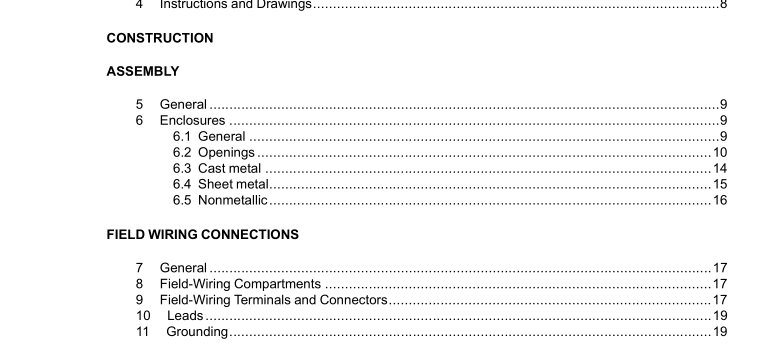UL 1480A-2021 pdf download.Speakers for Commercial and Professional Use.
1.2 These requirements do not cover the following: a) Speakers intended for use in hazardous locations as defined in the National Electrical Code, NFPA 70; this includes speakers tested with the requirements in the Standard for Explosion-Proof and Dust-Ignition-Proof Electrical Equipment For Use In Hazardous (Classified) Locations, UL 1203; b) Speakers intended for personal or private consumer use; this includes speakers for household/domestic use covered by the requirements in the Standard for Audio-Video Products and Accessories, UL 1492 and the Standard for Audio/Video and Musical Instrument Apparatus for Household, Commercial, and Similar General Use, UL 6500; c) Speakers which are intended for commercial or professional audio applications and which employ integral active electronics; these products are covered in the Standard for Commercial Audio Equipment, UL 813; the Standard for Professional Video and Audio Equipment, UL 1419; and the commercial audio amplifier applications covered in UL 6500; and d) Speakers intended for security applications; these products are covered in the Standard for Local Burglar Alarm Units and Systems, UL 609; and the Standard for Household Burglar-Alarm System Units, UL 1023. 1.3 Speakers intended for use with fire alarm systems are covered by Standard for Speakers for Fire Alarm and Signaling Systems, Including Accessories, UL 1480. Speakers with integral amplifiers must comply with the requirements in UL 1480 and the Standard for Amplifiers for Fire Protective Signaling Systems, UL 1711. 1.4 Speakers intended for use with emergency and non-emergency systems and having integral amplifiers must comply with this standard in addition to the requirements in the Standard for General- Purpose Signaling Devices and Systems, UL 2017.
2 General 2.1 Components 2.1.1 Except as indicated in 2.1.2, a component of a product covered by this standard shall comply with the requirements for that component. See Appendix A for a list of standards covering components generally used in the products covered by this standard. 2.1.2 A component is not required to comply with a specific requirement that: a) Involves a feature or characteristic not required in the application of the component in the product covered by this standard, or b) Is superseded by a requirement in this standard. 2.1.3 A component shall be used in accordance with its rating established for the intended conditions of use. 2.1.4 Specific components are incomplete in construction features or restricted in performance capabilities. Such components are intended for use only under limited conditions, such as certain temperatures not exceeding specified limits, and shall be used only under those specific conditions. 2.2 Units of measurement 2.2.1 Unless otherwise indicated, all voltage and current values mentioned in this standard are rms. 2.2.2 Values stated without parentheses are the requirement. Values in parentheses are explanatory or approximate information. 2.3 Undated references 2.3.1 Any undated reference to a code or standard appearing in the requirements of this standard shall be interpreted as referring to the latest edition of that code or standard.
3.7 DISTRIBUTED AUDIO SYSTEMS – Distributed audio systems, also referred to as constant voltage systems, provide a constant voltage from the amplifier to the speaker and usually have long wire runs between the amplifier and the speakers. Typical distributed audio voltages are 25, 70, or 100 volts. 3.8 ELECTRICAL CIRCUIT (HIGH-VOLTAGE) – A circuit other than audio involving a potential of not more than 300 volts and having circuit characteristics in excess of those of a low-voltage circuit. 3.9 ELECTRICAL CIRCUIT (LIVE PART) – A conductive part of a circuit carrying (or having the potential to carry) voltage, power, or current of sufficient magnitude to present a risk of fire or electric shock. 3.10 ELECTRICAL CIRCUIT (LOW-VOLTAGE) – A circuit other than audio involving a potential of not more than 30 volts alternating-current (AC) rms, 42.4 volts direct-current (DC) or AC peak. 3.11 FIELD-WIRING LEADS – Leads to which electrical connections are made in the field. 3.12 FIELD-WIRING TERMINALS – Terminals to which electrical connections are made in the field.UL 1480A-2021 pdf download.
UL 1480A-2021 pdf download
